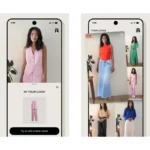To design an engaging app for Android or iOS requires careful planning and consideration of various factors. Here are some steps mentioned in this post which you can follow to design an engaging app.
Ever heard the saying, ‘Measure twice, cut once?’ Well, that idea applies to design an engaging apps for android or iOS, too. When you’re designing an app, you can verify you’re on the right track and avoid doing costly rework by user testing your prototypes. You can iron out the twist in the design before you’ve written any code, saving your team the time and hassle to design an engaging app for android or iOS.
Table of Contents
Design and architecture of any app are equally important. For example, you don’t construct a bridge first and then test how many vehicles it can bear, this is what happens today in the software industry. The design and architecture ensure that you have blueprint of your project and already know before building a bridge how much weight can it bear. I’m sure this example makes the understanding of designing an engaging app for android or iOS.
Now, by the term “user engagement” we mean that the users want to spend more and more time in your app and that they want to use your app again and again because they just love using it.
To design an engaging app for android or iOS, you must ensure that your app has as many of these qualities as possible:
Define the purpose and target audience of the app:
Identify the specific problem or need that the app is intended to solve and the target audience for the app. This will help you design an app that is relevant and useful to your intended users.
Conduct market research:
Research the market to see what similar apps are available and how they are being used. This will help you understand the competition and identify any unique features or functionality that your app can offer.
Engaging app should be Useful:
The first and the most important yet simple criteria that your app must fulfil is that it should be useful. What this means is that users should have an at least single strong reason to download and install your app. On using the app, your users should agree that it serves a purpose. In the best case scenario, the users should believe that your app is essential to them.
Must be Simple and intuitive:
The app should not require the users to spend more time and effort to learn how to use. Keep the overall ui and ux design of the app simple. Don’t try to do too many things. A mini-tutorial at first app launch can help a lot, but it would be even better to provide an on-screen tip/overlay explaining the use of a screen element when it is used by the first time. As far as possible, make things intuitive so that things are evident or self-explanatory. This is where you need a rock-solid UX designer, since the app adoption can increase drastically if your UX is designed right. Also, go for user reviews / user acceptance testing and carefully review, incorporate and respond to end-users’ feedbacks.
Experience should be fluid & responsive:
If your app does everything right but is slow or have so many lack, then users are going to stop using it sooner than later. Ensure that experience of your app is fluid & responsive. Hire good engineers who understand developing responsive apps. Even when the app is waiting for a response from the backend service, it should appear responsive to the users.
Non-intrusive:
Most apps on the store today earn money through ads and through in-app purchases. Both goals are critical, else you’ll be unable to sustain the development of your app. However, implement both of these in a way that users do not perceive as intrusive. Do not let users feel of being used for your ad monetisation criteria.
Make app beautiful:
Try to make your app beautiful. Choose a neutral theme that will look good on majority of your target platforms (e.g. iOS and Android). Use soft or pastel colors, peppy fonts, fluid transitions and very occasionally use sound feedback for some user actions (e.g. coin sound when a transaction succeeded or cheering sound when goal unlocked).
Test and iterate to design an engaging app:
Once you have a prototype, it’s important to test it with users to gather feedback and make any necessary improvements. Iterate on the design based on the feedback you receive, and continue testing until you have a polished, engaging app.

Launch and promote the app:
Once you have a finished app, you’ll need to launch it and promote it to attract users. Consider using a mix of tactics such as social media marketing, paid advertising, and public relations to reach your target audience and drive downloads.








